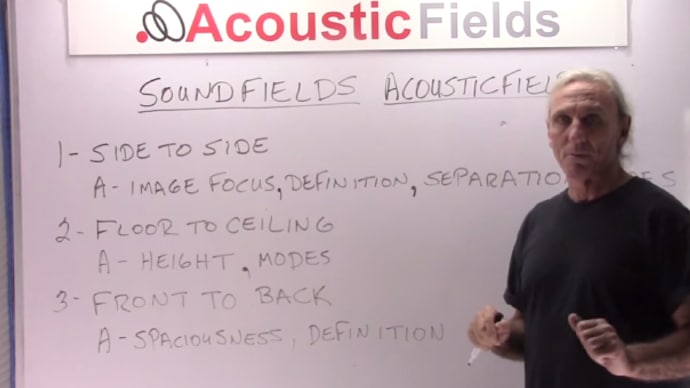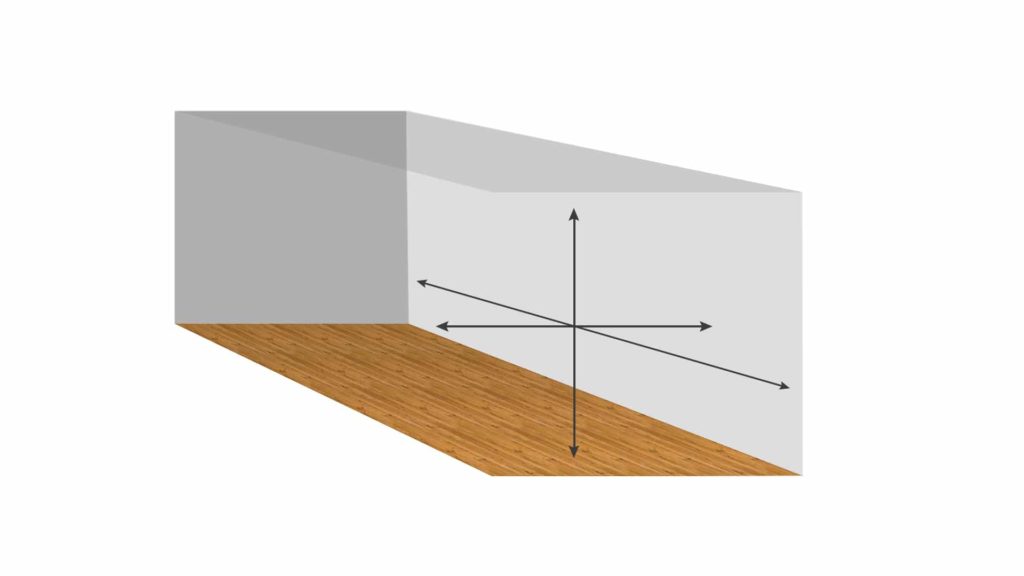The following is an unedited transcript from our video series from Acoustic Fields. There will be some errors in grammar and sentence structure that occur during this translation process.
For complete understanding and comprehension, please view the video which is included in this text. For any additional information regarding this topic or others relating to room acoustics, please contact us directly at:
P: 520 – 392 – 9486
dennis@acousticfields.com
______
Hi everyone, Dennis Foley from Acoustic Fields. Today we’re going to talk about sound fields. It’s the way that sound moves around in your room and a lot of people ask me how did you get the name Acoustic Fields? Well, it came out as a direct result of sound fields. Let’s look at how energy is distributed within our room and I think this will help a lot of you understand some of the questions that you’ve been asking me over the last couple of weeks about reflections, pressure, and imaging.
So what do we have for first off? We have side to side: sidewalls to sidewalls. We have this lateral element to our sound stage into our room. We have energy that’s going from sidewall to sidewall. What’s involved in that? We have image focus, you know, when you get a strong central image in your sound stage, you have good image focus if you have the side to side lateral reflections regulated so to speak and maintained. Then you have definition and separation and we always have model issues from sidewall to sidewall. These are issues that we have to be concerned about.
What’s the next sound field that we look at? Floor to ceiling. The floor to ceiling area is the area of highest pressure almost always. Why? Because it’s the shortest dimension. Our standard dimension in North America is eight foot. Well, that’s really problematic for frequencies that are trying to fit in that small space, so 60 – 70 – 80 cycle wavelengths, 100 cycles even in some cases. So anything from a 100 cycles below is going to be problematic with floor to ceiling heights of 8 – 9, anything under 11 foot. So we have to realize that. We have the floor to ceiling distance that impacts the height of our sound stage and obviously the model structures that we talked about. The unwanted, a low frequency pressures, which can just destroy and wreak havoc with any kind of presentation that you’re trying to create, especially with two channels.
Our third sound field if you will is front to back. With the energy moving from the front of the room to the back of the room, so we have side to side floor to ceiling and then we have front to back. We have these three areas that we have to look at. First is spaciousness, a really big thing with front to back imaging. If you take a series of diffusers or absorbers and you move them closer to the listening chair from the rear wall, you’ll immediately sense that spaciousness. Because you’re making the room physically smaller, so you’re changing all the reflections, you’re changing all the time signatures on those reflections. And you’re impacting the pressure distribution in those areas.
So front to back spaciousness definition, most if you don’t have the luxury of moving your rear wall forward but we do at our studio because we have portable units but try it sometime and you’ll get the idea. We have three sound fields in our room that we have to be focused on. Side to side wall energy, floor to ceiling and front to back.
Thank you,
Dennis Foley








